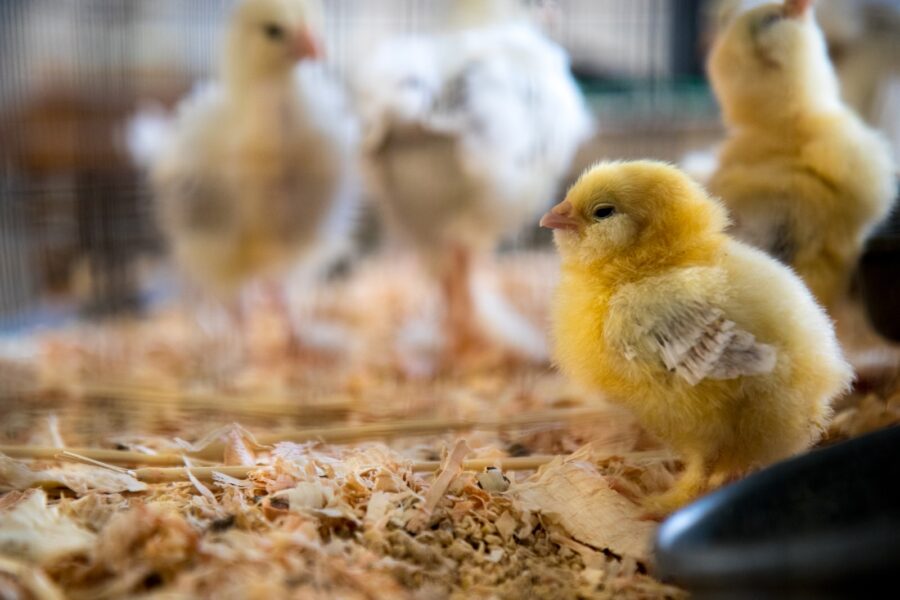[Editor’s Note: The following is an excerpt from the February edition of The Food Institute Report. The full report is included for electronic, professional, and corporate memberships and can be purchased separately for $99.]
It’s clear that egg prices rose in the first month of 2022, but determining a definitive cause is a bit more elusive.
The price of a dozen large white eggs rose to a national average of $2.08 on Feb. 9, representing a 22.5% increase month-over-month, according to Food Institute analysis of USDA data. What’s more, the price was up 39.8% from February 2021, and 59.3% from the pre-pandemic February 2020 reference period.
Kevin Bergquist, a Wells Fargo sector manager focusing on the egg industry, argued that although prices were certainly up, they were not accelerating at an unusually rapid rate. In an e-mail to The Food Institute, he said prior price spikes tracking back to 2013 have typically been tied to industry shocks like COVID-19 or avian flu, which made this current price increase a bit more perplexing.
“There is no one main factor or driver that causes egg prices to rise and fall. It’s an interconnected combination of things that can be hard to separate or recognize, and there are several circumstances impacting any given year,” said Bergquist, who cited seasonal and COVID-19 impacts on demand, the total U.S. layer flock size, variable feed costs, and export market conditions among the concerns pushing prices up.
Supermarket Sales Slow as Per Capita Consumption Drops
The refrigerated eggs category posted a 3.3% year-over-year decline in dollar sales for the 52 weeks ending Jan. 30, totaling about $6.6 billion, according to Food Institute analysis of IRI data. Unit sales were down 10.2% to about 2.3 billion units, as well.
Despite the downturn, supermarket sales of eggs were still up when compared to the period in 2020 on a dollar sales basis, rising 15.5% to 6.6%. Unit sales were down 3.8% during the quarter, although refrigerated liquid eggs posted increases on both a dollar (+19.8%) and unit (+18.7%) basis.
Bergquist noted egg consumption had been growing on a per capita basis up until 2020, so demand could be easing a bit. However, with egg consumption increasing 20% over the past decade, it was difficult to determine whether this was a slight blip or indicative of a growing trend.
“USDA is forecasting a slight increase in per capita consumption for 2022, most likely due to the relative affordability of eggs compared to other proteins available to the budget-minded U.S. consumer,” he added.
Producer Prices Rise
Recently released data from the Bureau of Labor Statistics shows that inflationary pressures hit fresh eggs at a rate that outpaced the rest of the food industry.
While the agency’s Producer Price Index (PPI) showed a 0.3% decrease for final demand foods in December 2021 when compared to November, eggs posted a monthly increase of 46.9%, according to Food Institute analysis (available to members only). The PPI data showed an 81.9% increase year-over-year for the month.
Bergquist said the numbers were being compared to a much lower-than-average December 2020 price, which produced the eye-opening percentages, but that didn’t discount the high egg prices currently being reported.
Production Edges Up, but Down Overall
Shell eggs broken in December 2021 increased 1.1% year-over-year and 3.5% month-over month, according to USDA data. During all of calendar year 2021, shell eggs broken totaled 2.28 billion dozen, up 2% from the comparable period in 2020. To date, cumulative total edible product from eggs broken in 2021 was 2.91 billion lbs., according to the agency.
The nation’s egg-layer flock is likely in a declining phase, according to Bergquist, and it’s clear that the flock has dropped significantly from 2019 when egg prices were lower amid an oversupply. He noted COVID-19 related disruptions in egg demand had caused egg producers to reduce flock size, and although they have been rebuilding slowly since summer 2020, it remained below 2019 levels.
“The younger flocks produce more eggs per hen, and the higher productivity can offset the effects of the small flock size and support increased production,” he said.
Cage-Free Continues to Grow
The egg industry had already begun converting to cage-free type housing for egg layers as a growing number of consumers, foodservice operators, and retailers made commitments to eat or serve humanely-produced eggs. USDA noted roughly 30% of egg-layers in the U.S. are housed in a cage-free environment and demand would push this number up to 55% by 2026, according to Bergquist.
Although the pork industry had managed to stall enforcement for California’s Proposition 12, egg industry provisions have already been implemented.
“Egg companies routinely supplying California with eggs have shifted production to cage-free or colony cage henhouse configurations long before the 2022 date, so there’s no particularly acute shock to the available egg supply,” he noted.
Plant-Based Contenders
Bergquist did not see the plant-based egg market as a major threat to the egg industry overall, believing it was currently a niche product in retail stores. However, he cited Nielsen data showing strong growth in 2020 during the lockdown periods, but sales had slowed in 2021.
He also noted that U.S. plant-based egg substitute sales only reached $27 million in 2020, compared to the $1.4 billion reported for traditional eggs.
“A major roll out by a large foodservice franchise or a targeted expansion towards the main street, price-sensitive consumer…would likely be more of a disruptor to the traditional egg market,” he said.
To that end, he expected more companies to develop their own plant-based egg substituted products, which could actually saturate this niche market at some point.












